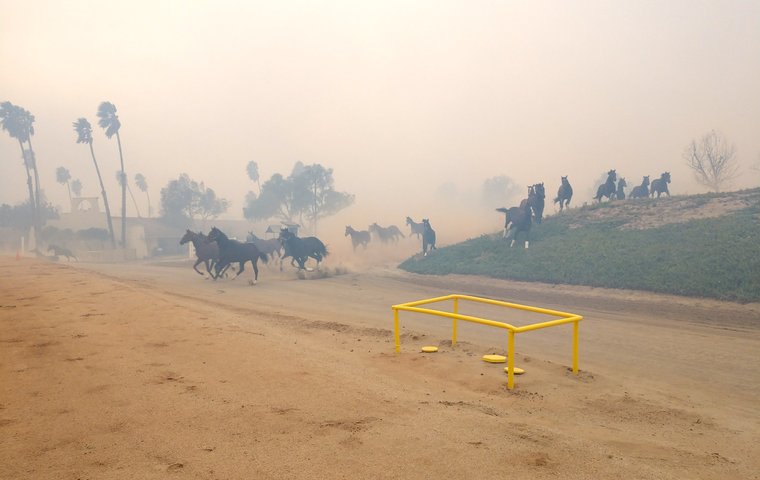
Amid the desperate bravery, the tears, the heartbreak, the fatigue and the unimaginable chaos of the tragedy of San Luis Rey Downs, an army of selfless volunteers put their lives on hold - and sometimes at risk - to step in and help. As TRC writer Daniel Ross says: “It was emotional for this writer to watch the people he has seen for years perform the everyday selfless deeds of racetrack life come together and create a moment larger than the sum of its parts.” This is Ross’s first-hand report from the day after the tragedy.
“It was devastating,” said Annabelle Weller-Poley, general manager of the Trifecta Equine Athletic Center in Southern California, with her clipped, Downton Abbey English that added a no-nonsense bearing to a scenario few have been able to make sense of.
It was about 11 o’clock in the morning this past Friday, and we overlooked the center’s small oval training track, in the middle of which are carved deep ponds that glisten jade in the sunlight. Every 15 minutes or so, helicopters with long dangling umbilical cords attached swooped down to suck water from these ponds, which they then took to douse the wildfires raging in the vicinity.
But Weller-Poley had one particular flank of the wildfire in mind when she says she hopes “never to repeat it again” – the one that less than a day before engulfed the San Luis Rey Downs training center, situated just over the lip of the valley facing Trifecta, killing at least 46 racehorses stabled there.
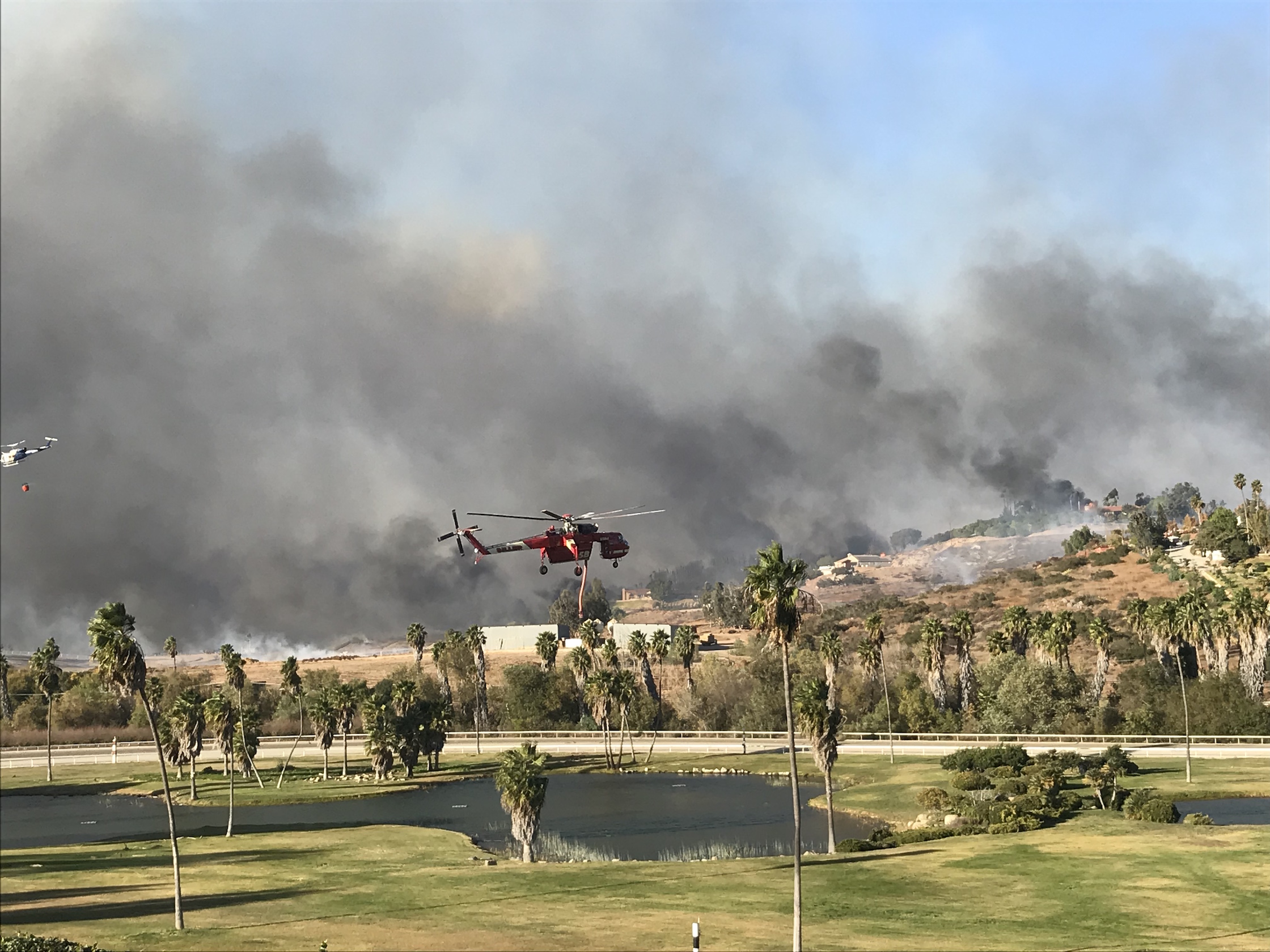
This fire swept over San Luis Rey Downs quickly, leaving little to no time for staff there to hatch an escape plan for human and horse. Most of the racehorses were let loose, so that, as the fire engulfed the buildings, herds of terrified horses careened around the property.
Trifecta had taken in about 70 horses from San Luis Rey Downs, the barns and outside pens full to the brim. But not all victims of the San Luis Rey Downs fire were equine.
Two trainers stabled at San Luis Rey Downs, Martine Bellocq* and Joe Herrick, were taken to hospital with burns, along with an outrider, Les Baker, injured during the evacuation. Bellocq was placed into an induced coma. For the rest who escaped with no visible injuries, the mental scars will be hard to heal.
“You can see, by the dark rings under their eyes, what this has taken out of them,” Weller-Poley said, alluding to the trainers and assistants and grooms and owners who filed into Trifecta looking for horses lost amid the melee.
She understands, too, how precarious her own situation was, and pointed to the scarred black patches of scorched earth among the hills facing Trifecta to indicate the proximity of the fire. A burning ember could so easily have blown in the direction of where we stood. Trifecta could so easily have gone the way of San Luis Rey Downs.
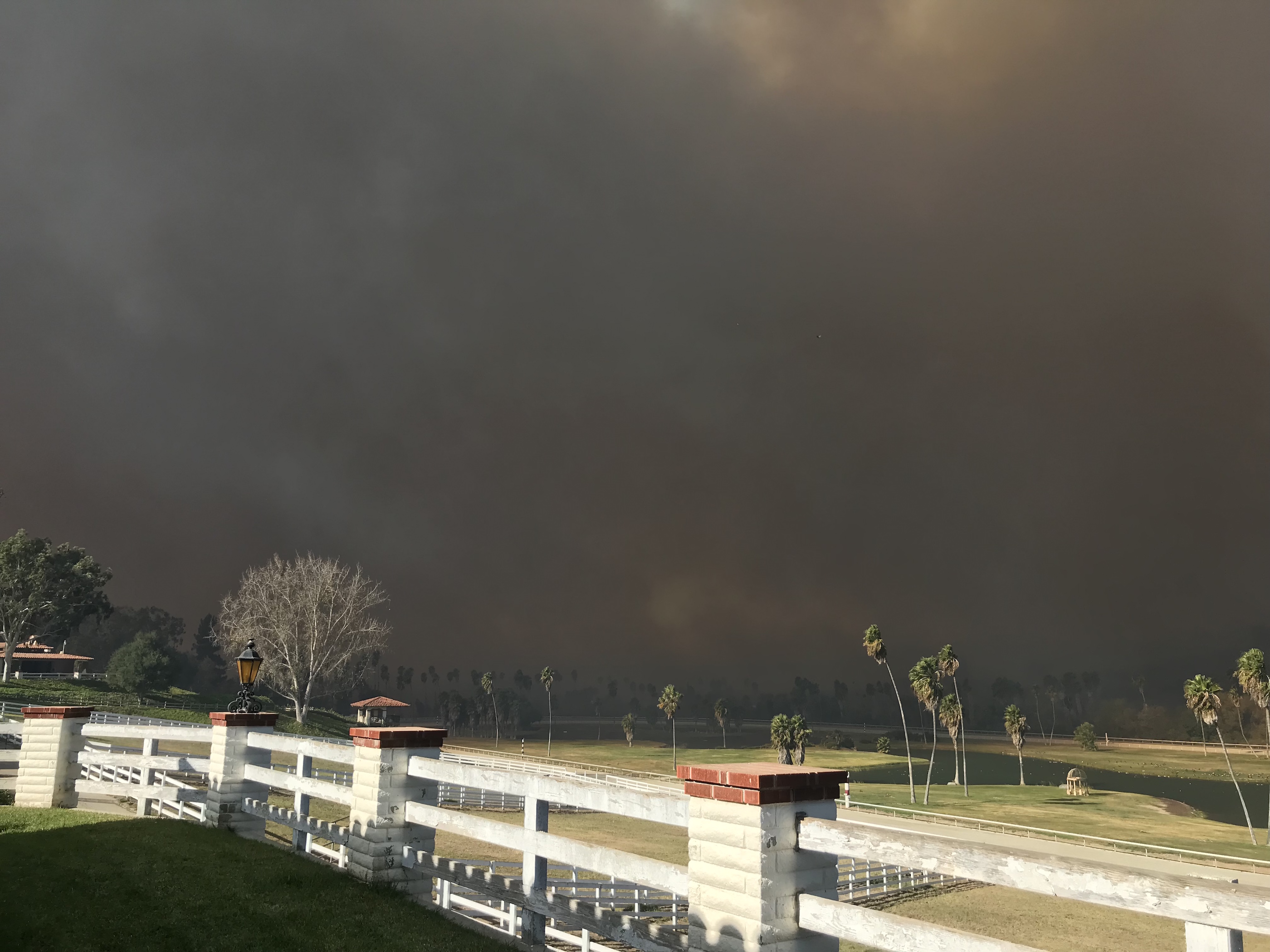
It was among those same hills that Weller-Poley and the team from Trifecta scavenged for horses amid the smoke and the chaos and the confusion.
“I just wanted to help the ones that I could help,” said Weller-Poley, who described her attempts to drag slowly, yard by yard, down from the hills opposite a horse, exhausted and frightened, who had “tied up” – a condition whereby a horse’s muscles have essentially ceased shut. She persevered, and the horse in question was tucked up safely in a stall the next day.
“But I saw one who didn’t make it, and you’ve just got to wish them well on their journey up to…” and she left the thought unfinished, trailing upwards as another helicopter swooped in noisily to siphon a large throatful of water.
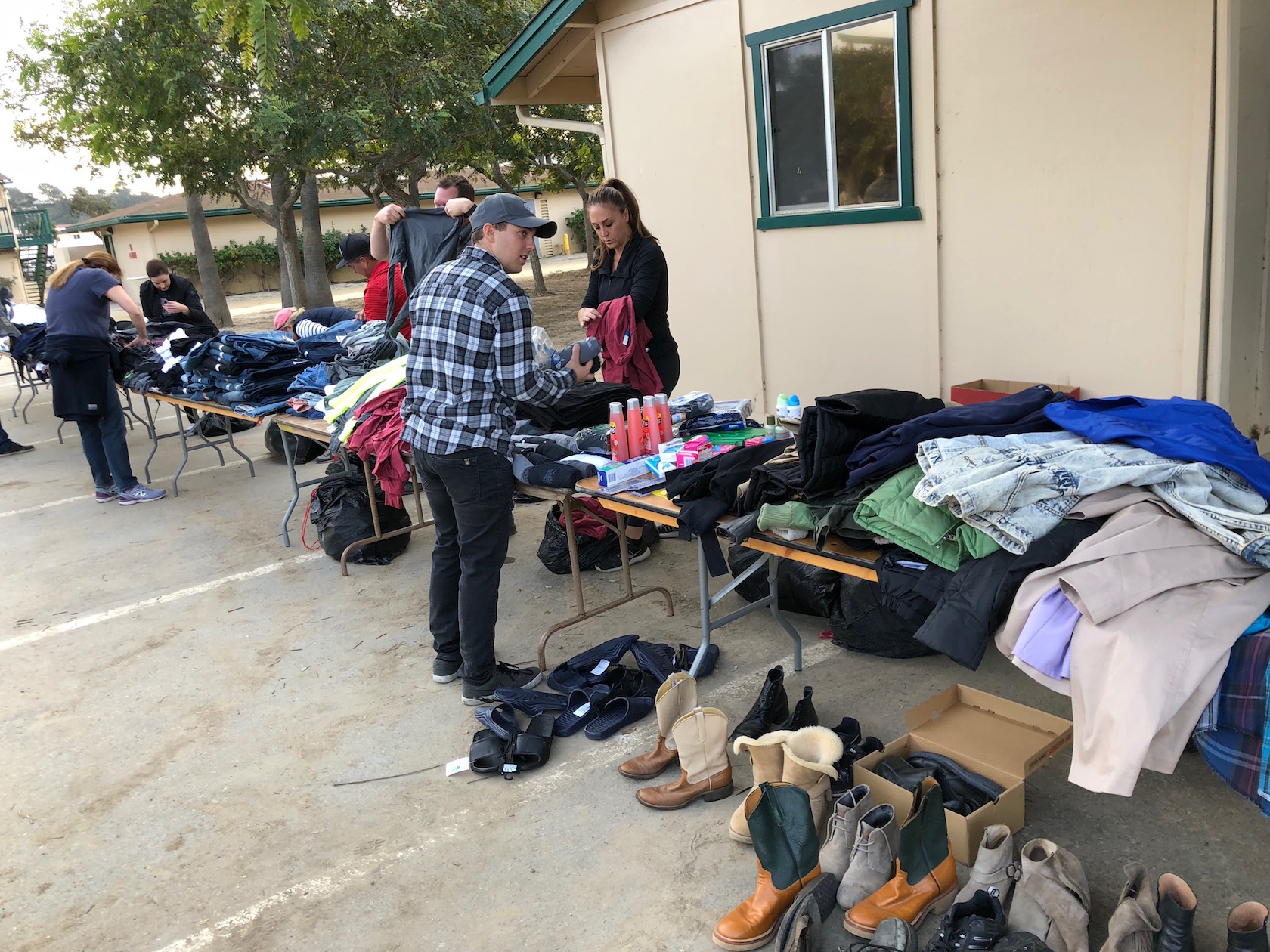
More than nine hours earlier, when the day was still only a couple of hours old and the stars were as bright as rhinestones, Del Mar racetrack hosted a gathering of volunteers eager to pitch in and help after the tragedy. A group of about 20 people were huddled around the table at the stable entrance. Clipboards with liability waivers were passed to the new arrivals. Dozens had already been sent about their duties.
The afternoon before, Del Mar — a hitherto deserted and empty ghost town — had flung open its doors to evacuees from the local wildfires. A convoy of vans and trucks and horse trailers had rolled in, one after the other after the other, offloading a Noah’s Arc of animals: horses, goats, ponies, donkeys and chickens, many of them dusty and shaken and exhausted. Some 350 racehorses alone were taken there.
But in the early hours of Friday morning, while those dirty, sooty and sweaty few who had only a few hours before carried the hero’s yolk stole a brief handful of winks, these volunteers stepped up to perform the yeoman’s work of holding down the fort.
They were an assorted bunch. Some older with horses of their own. Some younger with dreams of riding professionally. There were nurses, teachers, a television presenter. Students, pensioners, professionals.
Some readied stalls for new arrivals: two bags of shavings each, hay in the corner, a bucket of water by the door. Some wandered the shedrows, poking their heads over the doors to check on the inhabitants for signs of colic. Others went door to door, filling up waters.
“Oh look, so cute!” exclaimed a volunteer, when she opened one barn door to reveal two miniature ponies inside, one the color of chocolate, the other toffee. Both in fine health, thankfully.
Quietly, the volunteers carried out these tasks until the sun lurched its sorry head over the horizon, and the first backstretch workers trickled out to their barns to survey the damage and to regroup.
For many, the shock of the day before was hard to shake off – as it was for trainer Michele Dollase, close to tears when she saw her horses’ heads over their doors, all of them alive and well. At the same time, she feared that, about 45 minutes north-east of where she stood, her home near San Luis Rey Downs lay in smoldering ruins. (It would later transpire that the fire had stopped at the fence-line, saving the home from the flames.)
As the sun rose higher, a sense of urgency returned with the business of piecing back together the broken debris of their lives and livelihoods. Worldly possessions, gone. The instruments of industry collected over years, decades even, destroyed.
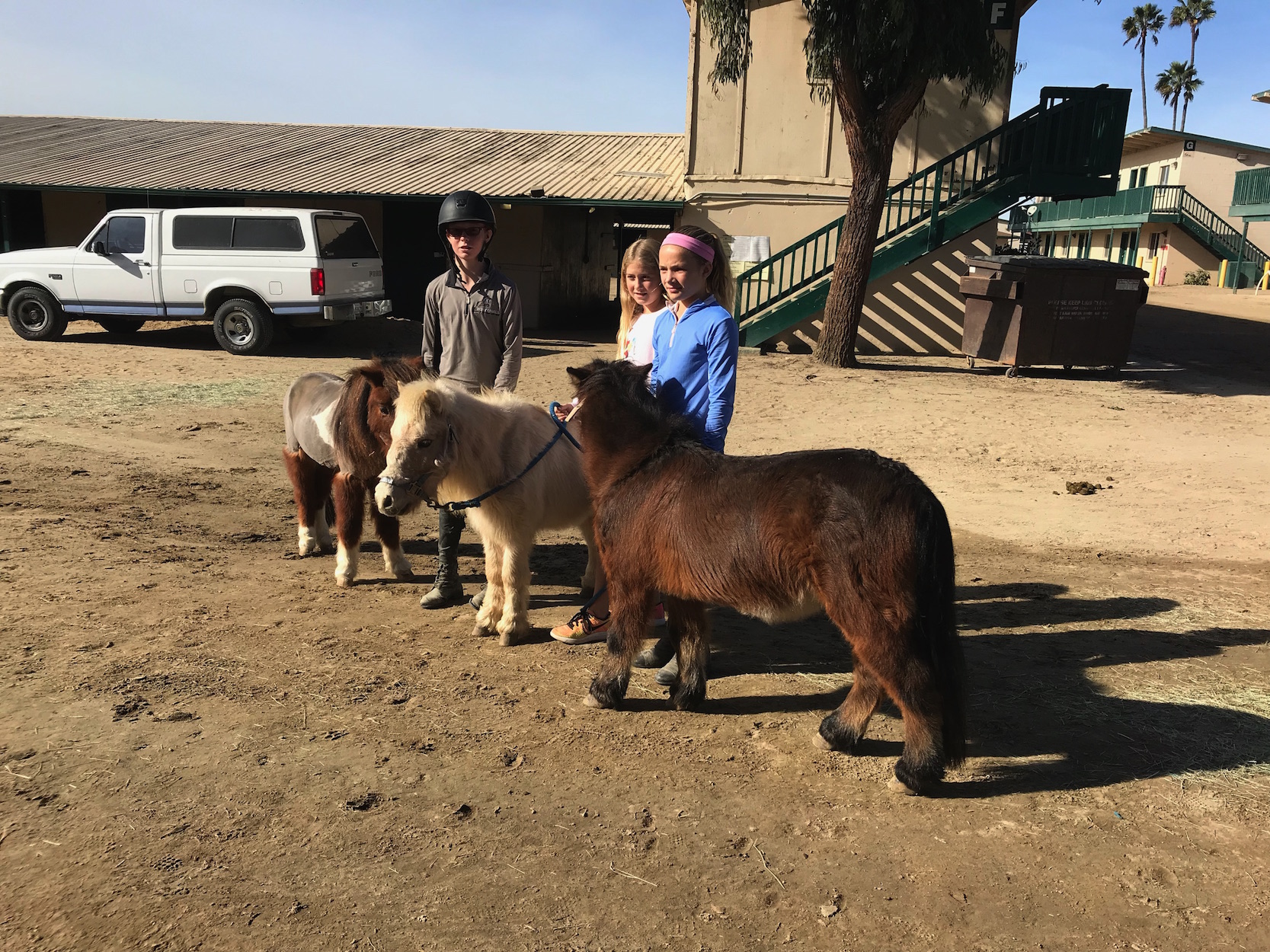
Many trainers still had horses to find. For, amid the melee of the previous day, horses had been scattered at random throughout the barns. Most had lip tattoos – but not all. And many John and Jane Does with neither lip tattoo nor microchip remained happy, hearty though unclaimed amid the frantic calls and text messages.
Then there were the horses cast far and wide among the local farms and stables. “We did not know where she was until a couple hours ago,” said Kris Snyder, midday Friday, about Phil D’Amato trainee Loving Lynda, who found shelter at Trifecta Farms. “She’s got an injury on her neck, but they’re taking good care of her,” said Snyder, a friend of the owner. “I’m just so glad she’s here and safe.”
But not all horses were as fortunate as Loving Lynda. Trainer Scott Hansen, who had 30 horses in training at San Luis Rey Downs, lost 15 horses in the fire.
Back at Del Mar, the weary soldiers went about the business of tending to their horses, fixing wounds, hosing legs, holding out carrots and apples for the hungry evacuees. According to Charles ‘Chuck’ Jenkins, a veterinarian who was working at San Luis Rey Downs when the fire caught, the horses that survived were in remarkably good shape, considering.
“We went and looked at every horse that made it [to Del Mar] from San Luis Rey Downs,” said Jenkins, who treated horses for trainers Doug O’Neill, Peter Miller, Richard Baltas and Scott Hansen. “There was an array of cuts and scratches and bangs and bruises, but not the serious stuff that was life threatening.”
‘He’s a hero’
Woven throughout the day were the stories shared by the folks present at San Luis Rey Downs - their tales graphically illustrated by the photos and videos (all of them tough to witness) on their phones.
Grooms like Carlos Robles, who, as the fire took hold, ran back inside one of the buildings to help a woman in her 60s trapped inside.
“She was screaming ‘Help!’ ‘Help!’” said Robles’ friend, Gustavo Castro, who pulled out his phone and started a video. As the shaky footage unfolded, sure enough, Castro emerged from the smoke with his arm wrapped around a small woman, as delicate looking as a bird.
“He’s a hero,” Castro said of his friend, who casually brushed the sentiment aside. A hero, yes, but a prima donna, no.
Trainers like Walter Solis, who, thankfully, didn’t lose any horses. But who, as he re-lived the day before, found himself fighting back the tears. “We tried to save some of the horses who had collapsed through the stress,” he said, eyes red raw as salmon. “Some of them, we couldn’t do nothing for them.”
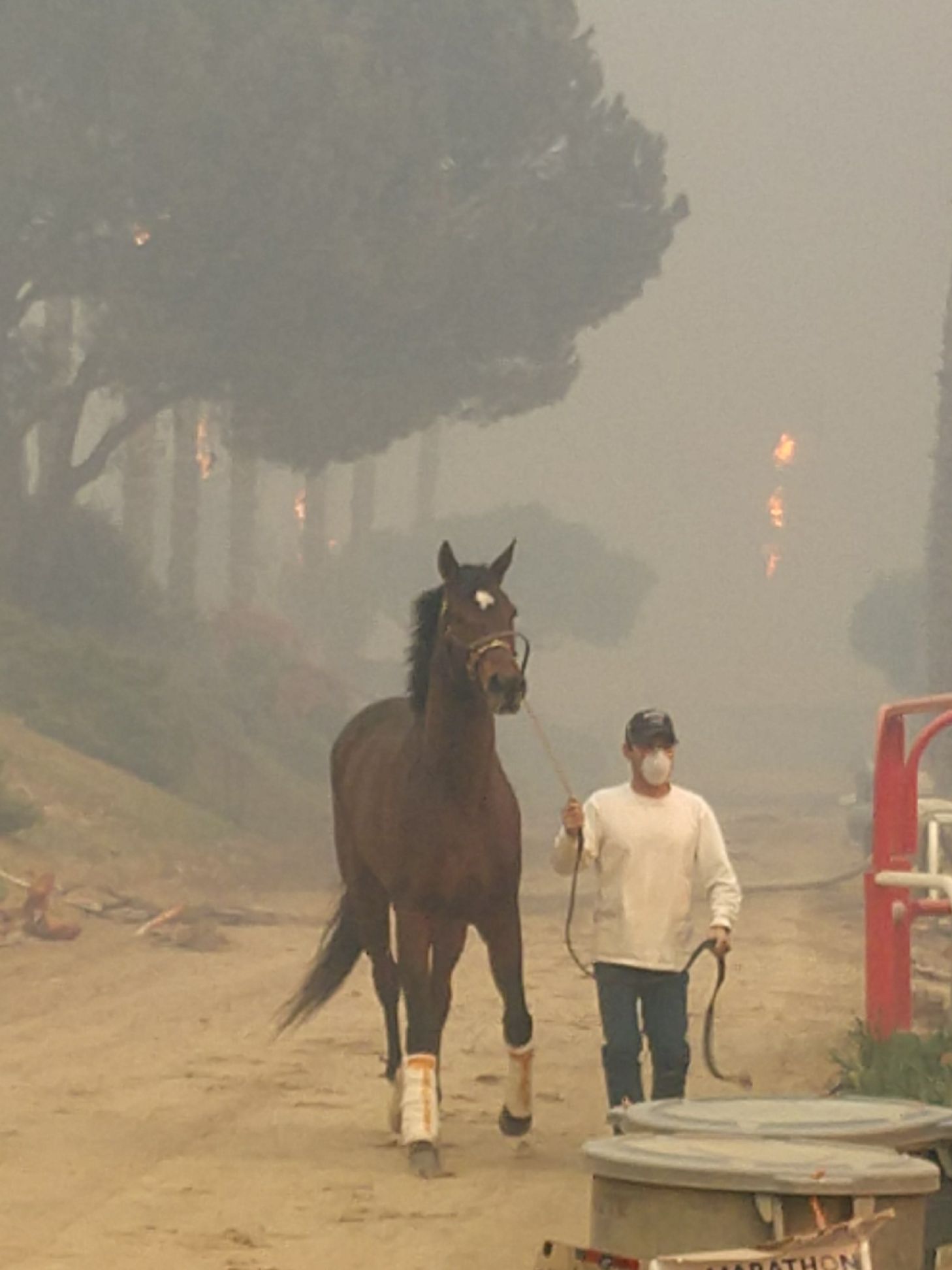
Veterinarians like Chuck Jenkins — renowned for his steel resolve under pressure — who described the feeling of helplessness as he and the others, having done all they could, were forced to watch with horror the flames engulf the stables.
“I wasn’t just scared, I was fucking scared, man,” he said. “But I tell you what, there were lots of heroes yesterday. Lots.”
Then there are those who might not have been at Sun Luis Rey Downs when the fire struck but who are nonetheless immediately touched by the tragedy - like exercise rider Tara Hemmings, who lives in an apartment behind the facility, but who, one day later, still didn’t know whether she had a home to go back to.
“I feel selfish worrying about my apartment while all of this is going on. But all of my possessions …” she said, letting the thought taper off. “It feels numb.”
But as the day wore on, a sense of unity and camaraderie belying the horrors took root, as it so often does in the aftermath of tragedy. But this had a different flavor - one more authentic to the innate hard-wiring of the sport. Closer to the rhyme and reason of the people in it.
‘It’s been emotional, very emotional’
“I’m just trying to get to grips with this terrible, wonderful thing,” said a volunteer, whose name this writer failed to catch, as she marveled at the scene around her. For, as the numbers of volunteers continued to swell throughout the day, so too did the donations that cascaded in.
Local feed companies like Elston Hay and Grain, Udder Feed, West Coast Feed and Citrus vanned in truck-loads of hay along with horse, goat and chicken feed that accumulated into mountains near the stable gate. Alongside the vast crates of bottled water, towers of new buckets and other stable supplies, the parking lot had more in common with a FEMA (Federal Emergency Management Agency) supply station than a racetrack.
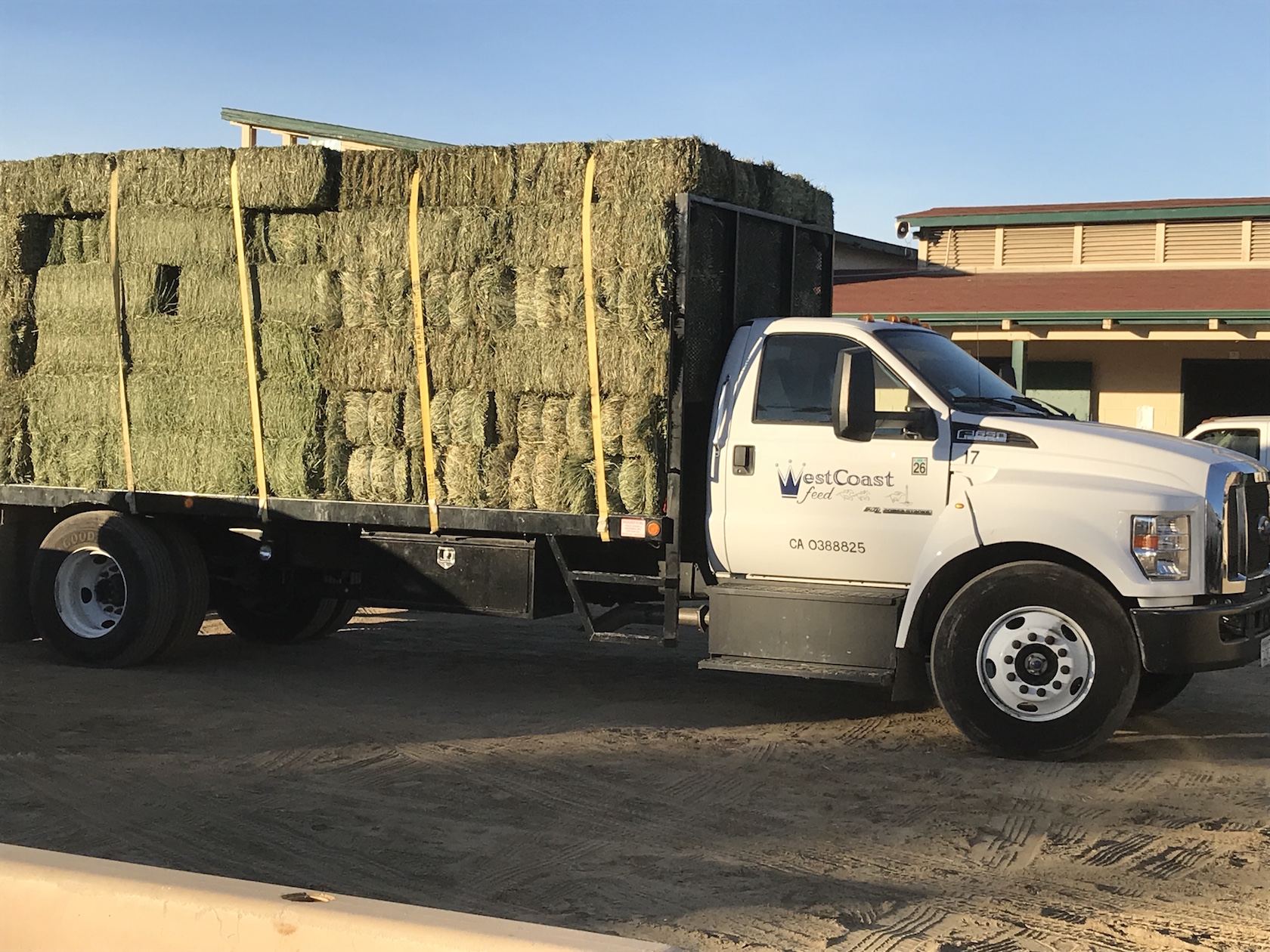
Back at the barn of trainer Richard Baltas, his wife Debbie re-appropriated the tack room into a command center of donations for the grooms who had lost everything in the fire. As the afternoon wore on, the speed at which she distributed the materials — air mattresses, sleeping bags, air pumps, cots, blankets, pants, shirts, socks, underwear, shoes, soap and toiletries, tents, food and whatever other items were gifted to bring relief to the many left without — failed to keep pace with what was coming in.
And the industry watched on from beyond, with hundreds if not thousands reaching into their pockets – like owner Jim ‘Mattress Mack’ McIngvale who donated over 100 mattresses for the benighted grooms. Within hours, a GoFundMe page rocketed past the $100,000 mark. Spendthrift Farms alone donated $50,000.
“It’s been amazing,” said Luis Jauregui, track safety steward for the California Horse Racing Board, from the driver’s seat of his tractor as he hauled supplies from barn to barn. “Horseracing’s been really rallying together. It’s been emotional, very emotional, seeing everyone come together like this.”
Jauregui wasn’t the only one feeling the conflicted poignancy of the moment. “I feel happy that all my horses came back safe, but I feel bad for the folks who lost horses – the whole tragedy of the thing,” said trainer Richard Baltas, wearing neon workmen’s gloves and a face full of fatigue. “The thing is everyone’s working together. People are making things happen.”
And it was emotional too for this writer to watch the people he has seen for years perform the everyday selfless deeds of racetrack life come together and create a moment larger than the sum of its parts - one that not only managed to somehow transcend the horror, but at times flirted with the sublime.
For the beating heart of the sport has never truly belonged to those whizz bang moments. The Derbies. The Breeders’ Cups. The next big world-beating 2-year-old. No, the true beating heart of this sport — a sport both wonderful and frustrating in equal measure — belongs to the unsung and essentially faceless folks whose names will likely never endure history.
The ones who, despite the lung-fulls of smoke and the white-hot heat of the flames, fought with a bravery they probably didn’t know they possessed to ensure the horses they love were given a fighting chance of survival, even if it meant they themselves might not.
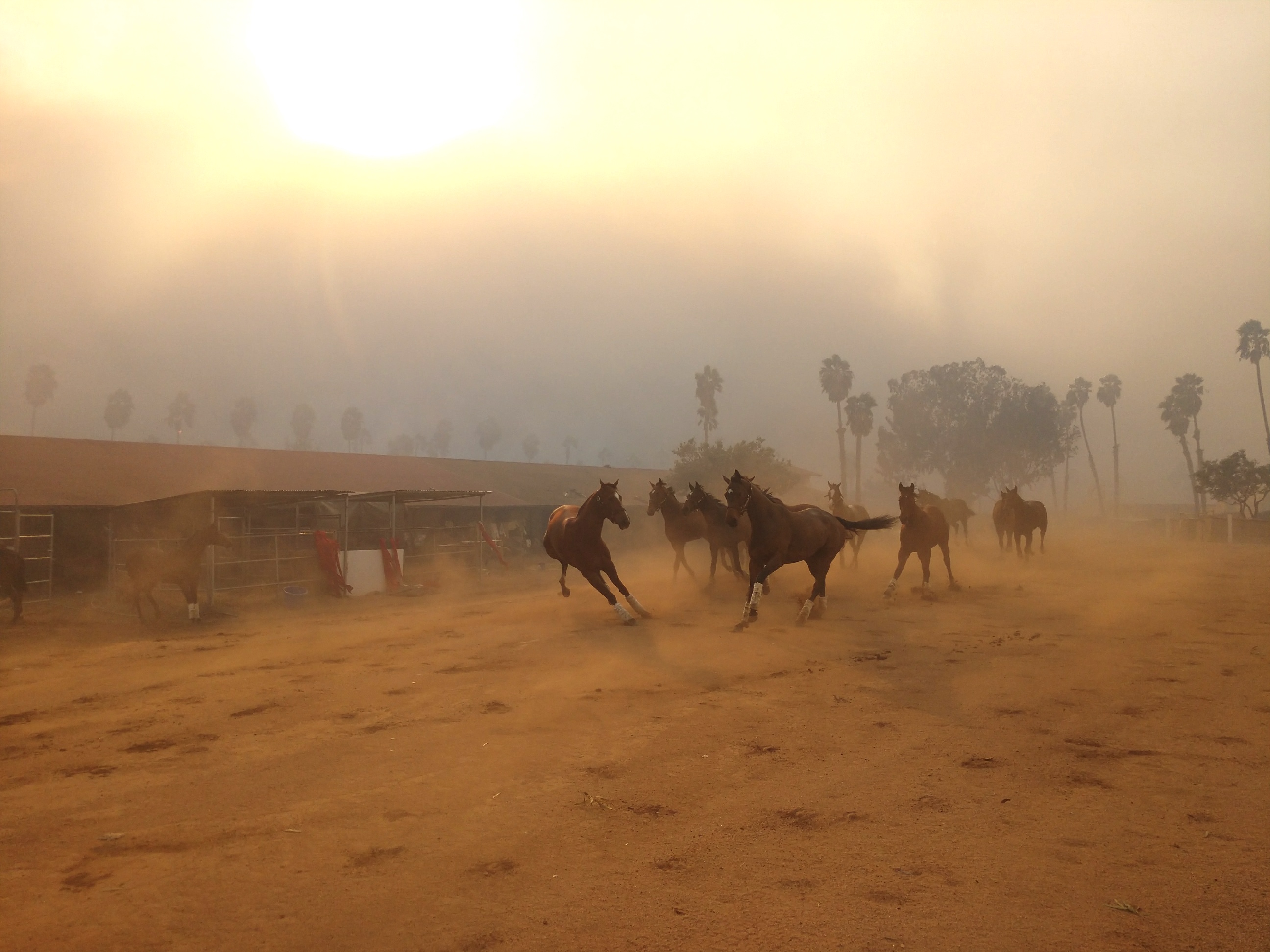
It belongs to the grooms and the hotwalkers who, while their homes and belongings turned to ash and cinders, threw themselves unthinking into the unimaginable chaos, straight into the path of danger. And why? To save the creatures whose wellbeing they’ve devoted the best years of their lives to.
It belongs to the veterinarians who stayed up all night to keep their burned and battered patients alive. To the farm owners who for their neighbors ran blindly into the dark. To the folks who turned out their pockets for strangers. To the young horse-mad volunteers who, having seen the beauty horse racing can possess, might be tempted to one day join our strange ranks.
It’s hard to grasp what those present at San Luis Rey Downs that day went through, the horrors of which will linger with them in some form or other unto eternity. In the days, weeks and months that follow, they’ll need the enduring support of this industry.
And the support they’ll receive will be unflinching - that we know.
For we know — above all else we know — what it is that drives those selfless acts borne from this awful tragedy: the all-consuming love of the horse, and a deep-rooted appreciation for all those who keep the heart of this great sport beating.
*Since this was written, Martine Bellocq has emerged from her coma.


